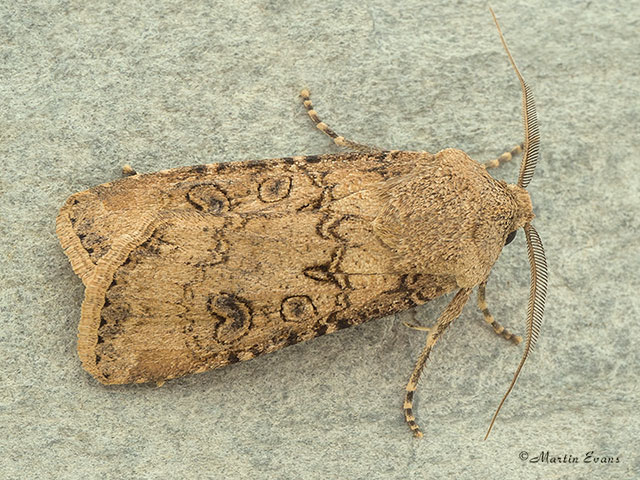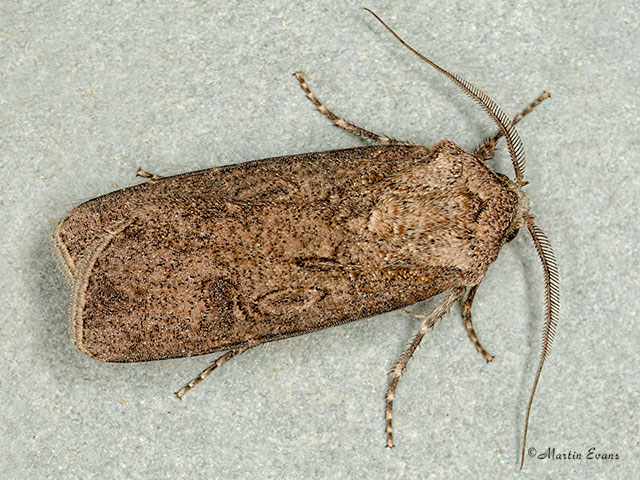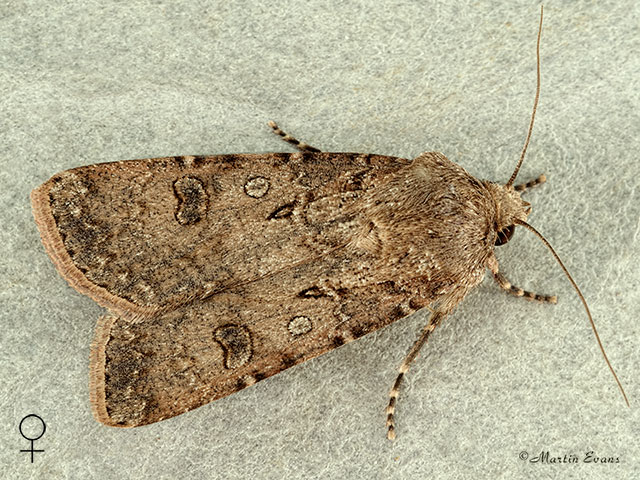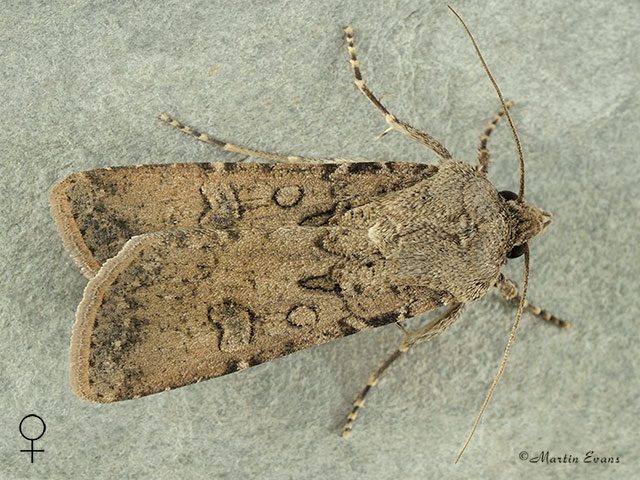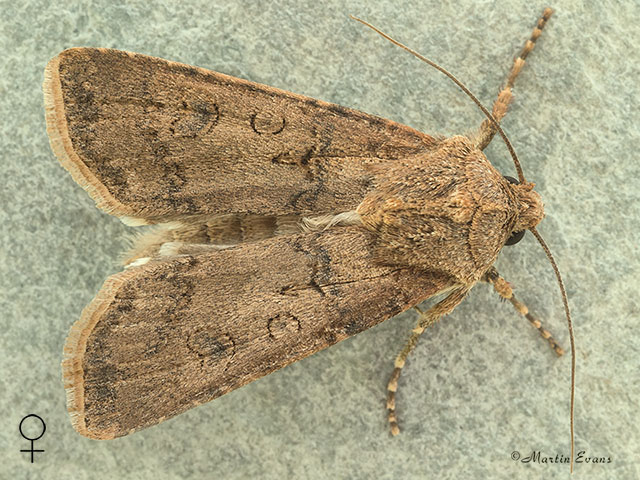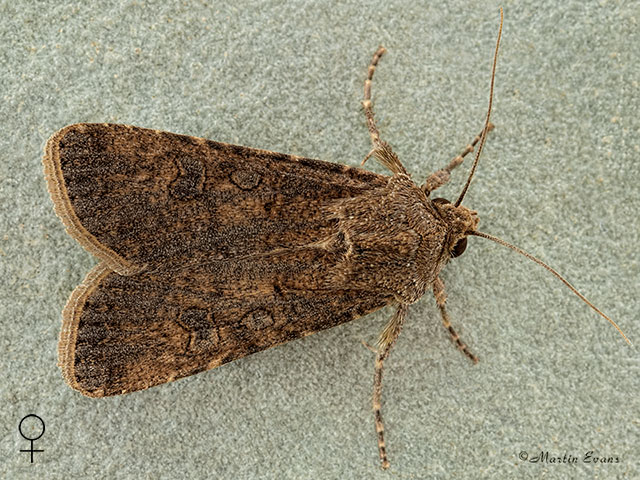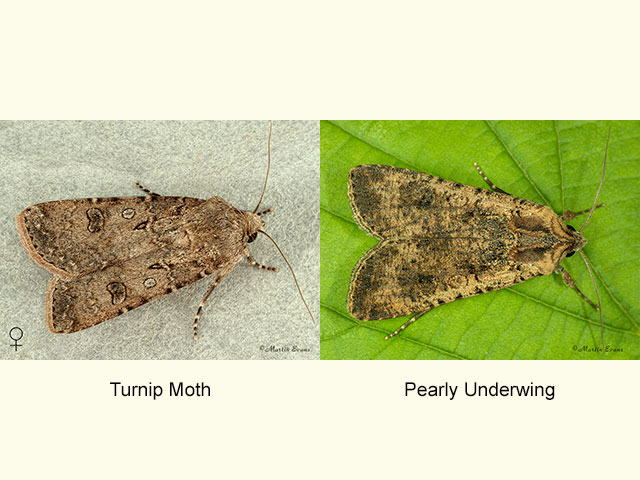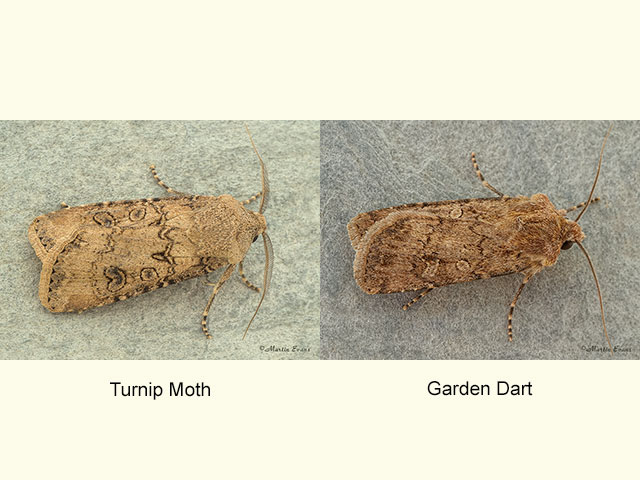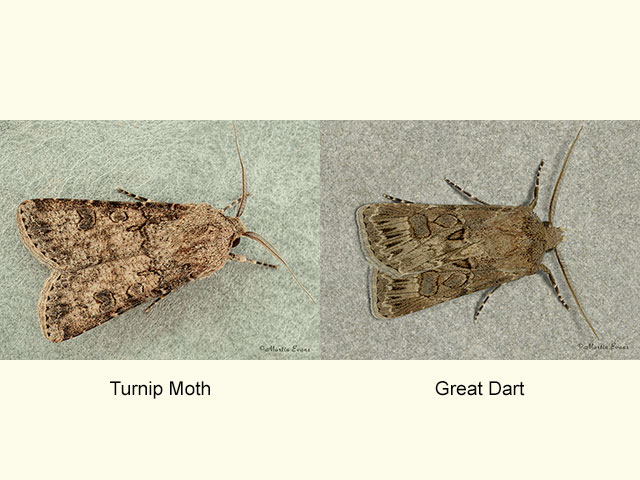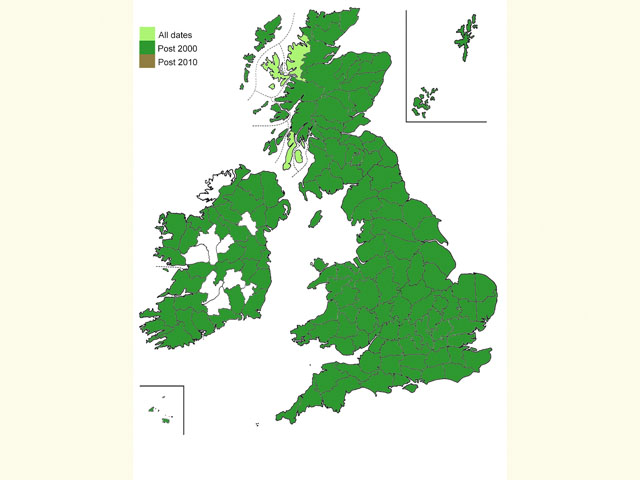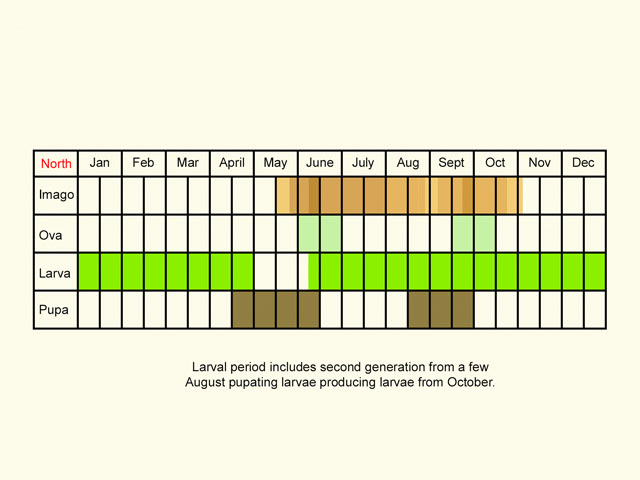Noctuidae
73.319 Turnip Moth Agrotis segetum ([Denis & Schiffermüller], 1775)
Common / Immigrant
Similar species: Pearly Underwing Peridroma saucia is usually larger (19 to 23mm), has a larger oval, a long grey crest on the thorax and the males lack the feathered antennae. The paler form of Garden Dart Euxoa nigricans is usually smaller (15 to 18mm), when visible only single-rowed inner and outer central cross-lines and the male does not have broadly feathered antennae. Great Dart Agrotis bigramma has broader wings, an inner central cross-line with a deep narrow loop at the trailing edge, and often more prominent black darts on the inside of the outer cross-line.
Forewing: 16 to 21mm
Habitats: Gardens, parks, allotments, arable land, open woodland, coastal downland and sand-dunes.
Habits: The moth is attracted to sugar and light.
Foodplant: The polyphagous larva feeds on clovers, medicks, sorrels and other grassland species. It is also a pest of root crops feeding on the roots and lower stems of Turnip, Carrots, Beet, Swede, Cabbage and other cultivated plants. It lives and feeds almost entirely underground. In the spring it pupates in an earthen cocoon under the soil.
On the European mainland and elsewhere it has also been recorded feeding on Apples, Acacia, Asparagus, Sunflower, Soyabean, Cotton, Coffee, Rhubarb and many other plants.
